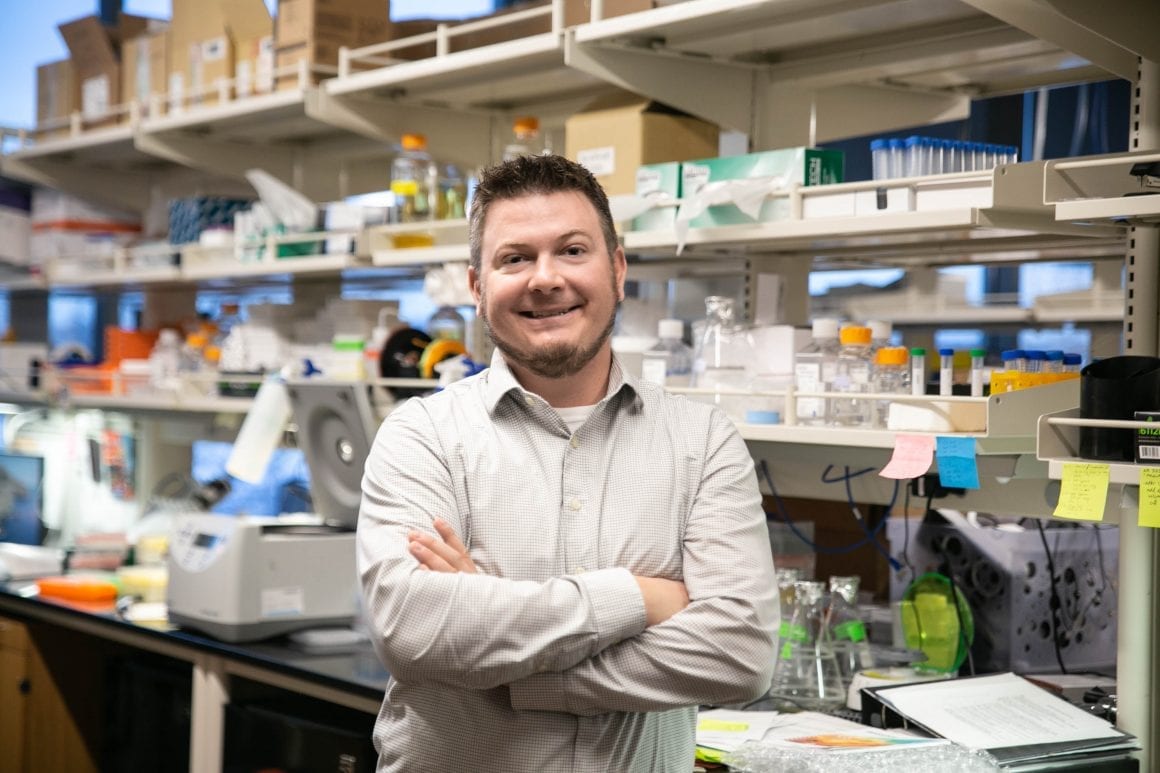Osteosarcoma, a deadly bone cancer, has many lethal talents: it can shuffle around its genome to evade therapies, confuse the immune system, and grow exponentially even if it starts with just a few cancer cells in a child’s body.

Webber's research has been funded by the Zach Sobiech Osteosarcoma Fund, which Zach and his family started shortly before he passed away in 2013. 100% of every dollar donated to Zach's fund goes to osteosarcoma research.
Beau Webber, PhD, uses the word “chaotic” to describe it. He has a wide range of experience studying the erratic genes found in solid tumor cancer, and he is an expert in genetic engineering and stem cell research.
Webber has already helped develop a first-of-its-kind trial using leading-edge genetic technology for GI cancer with Branden Moriarity, PhD, another researcher funded by Zach’s Movement at Children’s Cancer Research Fund.
Webber is hopeful that he can use his findings to attack osteosarcoma from all angles using the immune system and tiny biological scissors that can edit DNA.
Some solid tumor cancers like osteosarcoma have far more genetic mutations in comparison to other cancers. More mutations means the cancer is harder to attack with current treatments, because they only go after a couple of osteosarcoma’s weak points.
Webber says osteosarcoma is going to have to be treated from multiple directions to be effective, and he plans to figure out how with a highly innovative cancer modeling strategy.
To help strategize how to best beat the fatal bone cancer, it’s important for researchers to have methods to accurately model how it behaves in a person. Then, they can study how the cancer forms, mutates, and migrates.
Current cancer models are like peep holes into a vast and complicated cancer universe. “We only have the models we have,” he says. “They’re not perfect.”
Mostly, researchers use cells derived from patient tumors grown in Petri dishes (in vitro) and mice to model how a cancer works. The problem with these models is that they do not always accurately represent the human body, and cells grown from existing tumors only provide a snapshot of cancer development.
Also, each person’s body is unique, so osteosarcoma, being an “intelligent” cancer, might find one way to grow in a patient, and a very different way in another.
But, Webber and his team can reprogram skin and blood cells into so-called induced pluripotent stem cells (iPSCs). iPSCs are not derived from embryonic stem cells, but behave similarly and can be directed to form any cell type in the human body, including the bone cells from which osteosarcoma originates. The DNA code of iPSCs can also be precisely manipulated using CRISPR gene editing technology.
CRISPR editing technology is a powerful and new way to alter genomes. It allows scientists to zoom in on microscopic DNA sequences and modify their behavior by cutting them with biological “scissors” and stitching them back together.
Webber wants to turn iPSC cells into the bone cells where osteosarcoma comes from, add osteosarcoma mutations, and watch how the cells change, grow, and take on the properties of the disease in a way that is similar to how it happens in the human body.
The window to osteosarcoma could become a lot bigger and clearer, with future support from Zach’s Movement.
“We could see everything from the beginning,” he says. “The hope is that this will allow us to pinpoint the key changes that lead to osteosarcoma formation and progression. The model is going to be very useful.”
Ultimately, he envisions combining modeling like this with immune cell therapies that are specifically matched to a patient. “You can take a mouse and form a tumor within it,” Webber says, “ But it doesn’t have the same immune system as the patient. That’s not ideal.”
In the future, researchers could take iPSCs and turn half into a patient’s osteosarcoma cells and half into a patient’s immune system (blood cells). Then, they could be combined in a mouse such that it has both the patient’s cancer and their matched immune cells.
This could help doctors understand how the cancer behaves in the specific patient, and find treatments targeted to their specific disease. Of course, this will take many more years of research and continued funding.
“All the pieces are in place,” he says. “We can make tumors in mice, and we can make blood cells. Now, we just need to combine the two.”
He is excited to see how the iPSC modeling is going to play out for cancers across the board. “You start with the vision, and then you work back, step-by-step, like a chess game,” he says. Knowing osteosarcoma’s moves will better help scientists make theirs.
“Better models means better cures,” he says.
Learn more about the research breakthroughs the Zach Sobiech Osteosarcoma Fund has made possible.
Donate to the Zach Sobiech Osteosarcoma Fund
Treatments for osteosarcoma, the cancer that took Zach too soon, haven’t improved in decades. Zach wanted his legacy to change that. 100% of all donations to the Zach Sobiech Osteosarcoma Fund go to research for better treatments for this deadly cancer.




